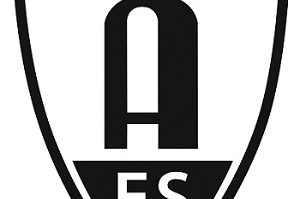Throughout much of my life, I hated to write.
Not only was it painful, but I lacked the skills to formulate a coherent sentence or paragraph. This deficiency was a severe tax on my career. Yes, I forced myself to write when absolutely required. With lots of time, I eventually could create acceptable text.

iStockphoto/Sergio Bellotto
My writing improved over the years, but without confidence or proficiency. Then, about 10 years ago, I decided to write my first book for MIT Press, and I knew that I needed to become better at the craft of written communication. I would like to share my learning experience.
As I was struggling to learn, my daughter recommended a book that proved to be infinitely better than the other zillions of books on how to write. Get a copy of William Zinseer’s book “On Writing Well.”I read it at least a dozen times.
Unlike books that teach the mechanics of writing, this book teaches the “psychology” of writing. Many of the principles for written communications are equally valid for oral presentation. I use these principles in meetings, public addresses and discussions.
BRAIN-TO-BRAIN CONNECTIONS
Let me start with the fundamental principle: Communication is successful when the ideas in the head of the writer appear in the mind of the reader. Thus oral and written communications make many similar assumptions.
The channel between the two people must be open so that the message can flow. This implies that both parties have the energy to devote cognitive resources to both sending and receiving messages. One or both parties may be distracted with unrelated issues, such as recently learned bad news. Either party may be tired.
Wait for the channel to be open. You can always ask if this is a good time to communicate. And respect the answer, especially if it is no. Pushing a message through a closed window frustrates both sender and receiver.
Nobody wants to spend time with a long article or lecture if in the end they are not interested in the content. If you start with the details, the receiver has no idea if they should invest the time.
One solution is to begin with a one-sentence summary of the scope, which answers the question why should you want to continue reading. This leads to the concept of the “hook,” getting the receiver interested in the content to follow. Grab the listener in the first sentence such that he or she wants to read more. One way to hook the reader is to personalize the opening, rather than being dry and academic.
Even the driest technical writing and oral presentations benefit from personal references since they appeal to emotions. Facts by themselves are not meaningful unless we know the relevance of the information. Engineers often make the mistake that relevance should be obvious — it isn’t. In a report about testing a transmitter an engineer could start with a comment about being nervous about how the station would handle a weather disaster. He is making a statement about the relevance of the content to follow.
DROWNED IN WORD FLUFF
Communications should be fun for both the sender and receiver, and the pleasure gets both parties to invest in the process. Zinseer has a wonderful article on page 26 about chickens, written by the author E.B. White at the height of World War II. I personally have little interest in chickens; but the article was a delight.
The opening sentence illustrated the hook: “Chickens do not always enjoy an honorable mention among city-bred people, although the egg, I notice, goes on and on.” At least for me, I wanted to read the next sentence. Reread the opening paragraph of this article; that was a pure hook that (I hope) grabbed your attention.
It’s important to raise the efficiency of communicating because the reader will get bored with too many useless words.
In general, adjectives and adverbs detract rather than adding to clarity. Word fluff kills communications.
In one classroom exercise, Zinseer describes a teacher who assigned each student the task of writing an essay. The next assignment was to reduce the size of that essay by a factor of two without removing any content. The result was actually an improvement in readability and interest.
Which of the following two sentences works best? (a) “I very much enjoyed the dramatic and illuminating presentation of your well-thought-out, high-impact discussion and analysis.” Or (b), “I enjoyed your presentation.” Both sentences are saying that you enjoyed the presentation. One version required 19 words. The other took four, and less time to read.
KNOW YOUR READER
Know the background and language of your audience. Writing for a colleague is not the same as writing for a manager, an investor, your kids or a general newspaper. If you assume knowledge that is not present, your communication will not make sense. Conversely, if you begin with the basics to an expert reader, he will be instantly bored and shut down the channel.
In writing this article, I created a mental model of you the reader as a broadcast engineer who loved engineering classes but who found English classes boring. For this reason, I chose to use a broadcast model to represent writing, which has a transmitter (writer), a listener (reader), a channel (paper) and a program (message). Listeners will stay tuned to the station if they (a) find the content personally relevant, (b) have a clear channel without noise and (c) do not have to work hard to comprehend the program. Learning to write is similar to learning to set up a broadcast facility.
Communicating is an art that is learned; none of us were born with the ability. How then do you improve your ability?
The conventional answer is practice and feedback. Try this experiment: Write four versions of a paragraph. Then critique the differences using the concepts of clarity, hooking, fun, etc. When I do this, I often notice that there are good sentences scattered among bad sentences in the four versions. I then pick and choose, and again rewrite the paragraph.
The key to practice is the emotional freedom to critique your own work. I had to learn this when I wrote my first and probably only book. After the initial three years of effort, I had nine versions of the book manuscript! And then the publisher’s copy editor rewrote 50 percent of my final text.
The editor was afraid that I would be very upset about all the changes. However, I was delighted with how much the new version improved the book. When I write these Radio World articles, I always generate an early draft and send it to our honorable editor, Michael LeClair, who comments on the draft (especially this one because he has a special interest in writing). Sometimes a single comment forces me to rethink a full paragraph or conclusion. In fact, some articles were completely rewritten when I saw that that Michael became confused or could not figure out the point.
WRITE WELL TO GET THE BEST JOB
While we are often pressured to write memos for business managers or articles for trade publications, writing a cover letter for a job application can have a dramatic impact on your career. A good cover letter can be worth thousands of dollars in increased income.
From my experiences as a career coach, I have observed the difference between a good and bad cover letter. Most people do not understand its purpose and they write a lot of facts about their skills and experience: “I did this and I did that.” Such letters are so dry, they fail in their single purpose.
This poses the question: What is the purpose of a cover letter? It has only one purpose. It must make the candidate come alive as a person who would be a welcome member of the company.
Having been an interviewer who helped companies sort through hundreds of applicants, I know that each applicant gets about 60 seconds of attention. I will never invest time to figure out the candidate’s qualifications if that process takes too much work. Life is not fair. The writer of a cover letter has to create a mental model that I can easily recognize. The writer needs to make my life easier because I am looking for a candidate who understands how to make the life of colleagues and manager function better.
Let me illustrate this with a concrete example of a candidate who was applying for a graduate program in health policy. I was helping her convert a boring application into one that would get attention. I knew that she had to sell herself in the first sentence. If the reader was emotionally captivated in that opening, the rest of the application would serve to reinforce the emotional decision to want her in the program. Notice both the first and last sentences in the paragraph below and the absence of facts about the candidate.
Crisis is opportunity. Newspapers regularly highlight exploding health care costs, striking unionized workers or diminishing quality of care. In addition to inducing anxiety and selling newspapers, these articles prepare society and its political leaders to invest in meaningful change and improvement in our national health care system. I want to be part of the process that transforms an archaic system into one that will match the current needs of society.
Using this paragraph, she was admitted with full funding to all of the top schools in her field. Her professor confirmed that the opening paragraph got her admission. The rest of the application and interviews were consistent with the mental model that the cover letter created in just 70 words. She was showing not telling him who she was.
My high school English teacher proved to be right: Learning to write is important even (especially) if you want to be an engineer. My engineering career was made by my writings. Yes, I had something to say, but lots of others had the same knowledge that I had. The difference is that readers wanted to read what I wrote.
As my final argument for learning to write, consider that you have unique skills and experiences that are important for executives and managers. If you want to be taken seriously and paid as a valuable contributing resource, those executives need to understand your message.
Barry Blesser is director of engineering for 25-Seven Systems. Contact him at www.blesser.net.







